Sweet Bursaria - native (Bursaria spinosa)
Family: Pittosporaceae. (Pittosporum family).
Native.
It is common and widespread.
Identification:
- it is a prickly shrub with slender prickles (and hence the name "spinosa")
- it has white flowers in summer
- the seed pods resemble an old-fashioned shepherd's purse (and hence the name "bursaria" from bursa a purse).
Bursarias vary considerably in size. In the local dry forests they are slender straggling shrubs about a metre high. In wetter forests (e.g. at Daylesford) they can grow to large shrubs to about double head height. In northern Tasmania they grow to large trees with stout trunks, resembling oak trees in stature.
Because of their flowering time they are sometimes called Christmas Bush.
Bursarias are important fodder plants for some insects, including the Eltham Copper Butterfly caterpillars. The caterpillars of the Eltham Copper Butterfly spend the day in an ant nest. In the warm spring nights the ants shepherd the caterpillars onto the bursarias to feed.
Two subspecies of Bursaria spinosa grow in the district.
Subspecies spinosa: Leaves hairless.
Subspecies lasiophylla: Backs of the leaves finely hairy.
Subspecies spinosa is the more common subspecies. The hairy-leaved bursaria is more frequently found north of Castlemaine.
Name. Bursaria: from bursa a purse, referring to the purse-shaped fruit; spinosa: thorny.
Photos 1: The distinctive "shepherds purse" fruit. Maldon. 2, 4: Flowers. Kalimna, Castlemaine. 3: Large shrubs beside the Coliban River, Ellis Falls.
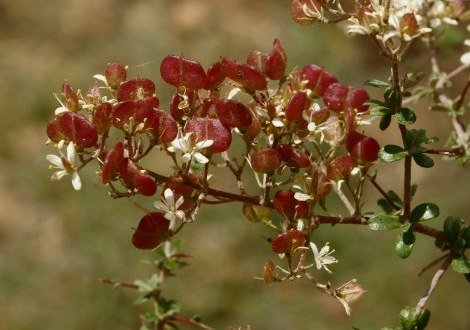
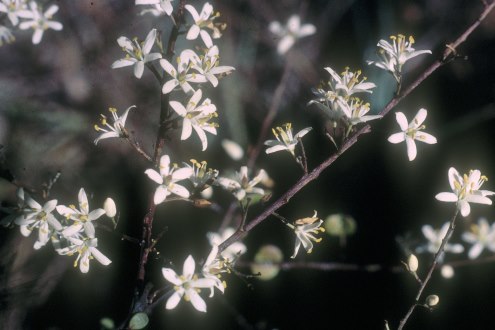
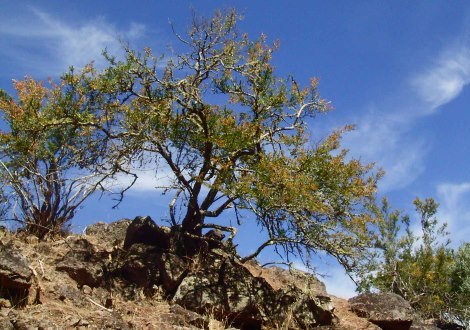
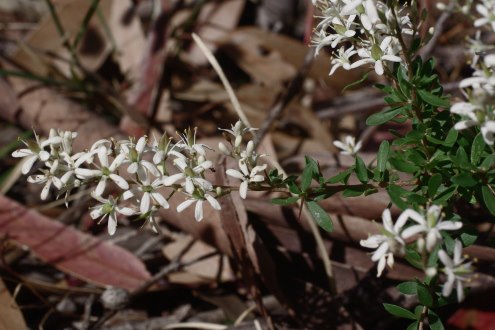
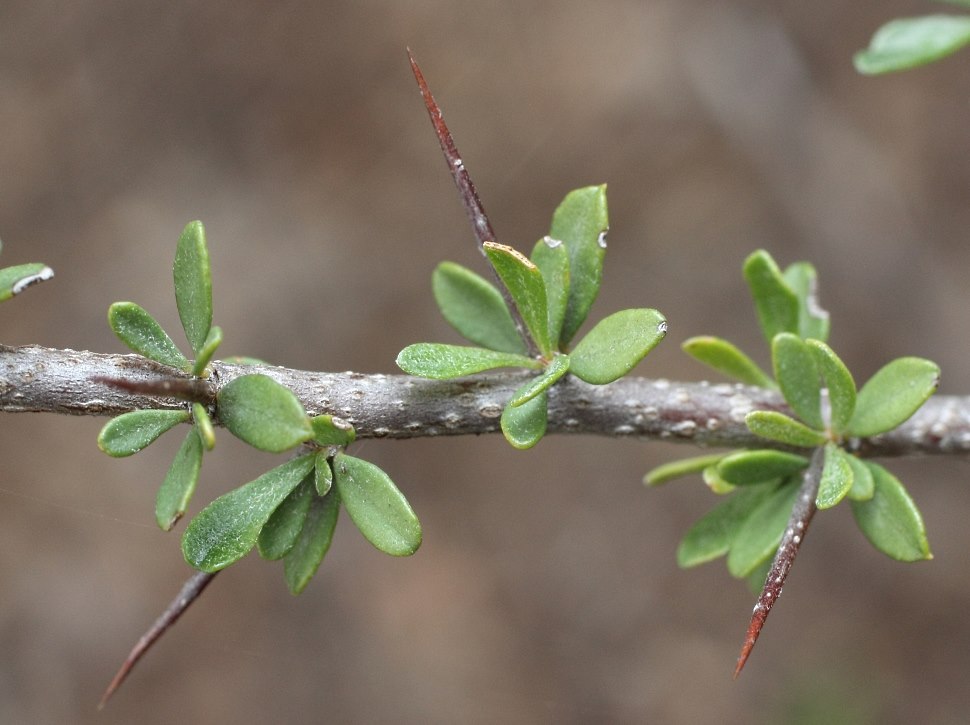 5: Branch with leaves and spines. Photo 5: Max Schlachter.
5: Branch with leaves and spines. Photo 5: Max Schlachter.